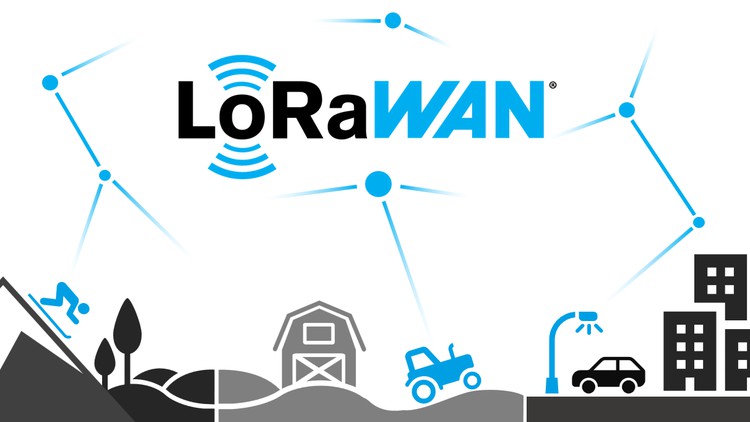Best Practices and Considerations for Establishing a LoRaWAN Network

LoRaWAN, a wireless communication technology, is increasingly becoming popular for diverse applications within the Internet of Things (IoT) sphere, due to its long-range capabilities. This wireless network supports various applications with low power consumption and extended communication range. Its versatility makes it suitable for many use cases, from smart agriculture to smart cities and beyond.
We will discuss the best practices and considerations for establishing a LoRaWAN network.Our discussion will encompass the fundamental elements that make up a LoRaWAN network, which comprise of end devices, LoRa gateways, network servers, and application servers. We will also discuss the different network architectures and frequency bands for LoRaWAN.
Furthermore, we will explore best practices for deploying and maintaining a LoRaWAN network. We will provide a step-by-step guide to ensure successful deployment, such as pre-deployment considerations, deployment processes, and post-deployment considerations. Lastly, we will highlight some of the challenges and risks that come with implementing a LoRaWAN network.
Understanding LoRaWAN Network
LoRaWAN network comprises four critical components: end devices, LoRa gateways, network servers, and application servers. The end devices are typically sensors or IoT devices that collect data, which is transmitted wirelessly to the LoRa gateway. The gateway receives the data, processes it, and sends it to the network server. The network server manages the communication between the gateway and the application server, while the application server processes the data and provides insights to the end-users.
LoRaWAN Network Architecture
LoRaWAN networks can use two different topologies: star and mesh. In the star topology, end devices transmit data to the LoRa gateway, which sends it to the network server. In the mesh topology, end devices can communicate with each other directly, creating a self-organizing network. The mesh topology is more resilient to network failures than the star topology.
Frequency Bands for LoRaWAN Network
LoRaWAN networks operate in different frequency bands, depending on the country or region. The most common bands are the EU 868 MHz, US 915 MHz, and AS 923 MHz. The choice of the frequency band depends on the regulatory environment and the network’s needs. For instance, the EU 868 MHz band provides a higher data rate, while the US 915 MHz band has better propagation in urban areas.
Best Practices for Establishing a LoRaWAN Network
Pre-Deployment Considerations
Before deploying a LoRaWAN network, there are several factors to consider. Firstly, you need to plan for coverage, which involves determining the network’s range and identifying potential obstacles that might interfere with the signal. Secondly, you need to plan for bandwidth, which involves estimating the network’s traffic and ensuring that there is enough bandwidth to support it. Lastly, you need to plan for security, which involves implementing encryption protocols and other security measures to protect the network from attacks.
Deployment Process
After planning for coverage, bandwidth, and security, the next step is to deploy the network. The gateway placement is essential, and you must ensure that the gateway is placed in a location with good coverage and minimal interference. Similarly, you must strategically place the end devices to ensure optimal connectivity with the gateway. Once the gateway and end devices are in place, you must configure the gateway to communicate with the network server.
Post-Deployment Considerations
After deploying the network, you must monitor and maintain the network to ensure optimal performance after deploying it. Network monitoring involves tracking the network’s performance, identifying and troubleshooting issues promptly. Network maintenance involves updating the firmware of the gateway and end devices, replacing batteries, and ensuring that the network is secure.
Challenges of Implementing LoRaWAN Network
Implementing a LoRaWAN network comes with several challenges, including coverage, interference, security, and battery life issues. Coverage challenges arise when obstacles such as buildings, trees, and other physical barriers interfere with the signal. Interference issues occur when other wireless devices use the same frequency band, resulting in signal degradation. Security risks come from potential attackers who might try to intercept or modify the data transmitted over the network.
Conclusion
LoRaWAN technology offers a wireless network with extensive coverage and low power consumption, making it suitable for diverse IoT applications. The deployment process involves planning for coverage, bandwidth, and security, strategically placing the gateway and end devices, and monitoring and maintaining the network after deployment. While there are challenges to implementing a LoRaWAN network, they can be mitigated by using best practices and the right equipment. As IoT applications continue to grow, LoRaWAN technology will become increasingly important, and understanding how to establish a LoRaWAN network will become essential for businesses and individuals.
FAQs:
Q: What is the range of a LoRaWAN network?
The coverage of a LoRaWAN network is influenced by different factors, including the frequency band used, transmission power, and the surrounding conditions. In general, LoRaWAN networks can cover several kilometers in rural areas and up to a few hundred meters in urban areas.
Q: How many end devices can a single gateway support?
The number of end devices that a single gateway can support depends on the gateway’s capacity, the data rate, and the bandwidth. In general, a gateway can support up to several hundred end devices.
Q: What measures can I take to guarantee the security of my LoRaWAN network?
To ensure the security of your LoRaWAN network, you need to implement encryption protocols, use strong passwords, and ensure that the firmware of the gateway and end devices is up-to-date. You can also use firewalls and other security measures to protect the network from attacks.
Q: Can I use LoRaWAN in areas with high interference?
Yes, you can use LoRaWAN in areas with high interference by choosing the right frequency band, reducing the transmission power, and using directional antennas to minimize interference.
Q: How long do the batteries in LoRaWAN end devices last?
The battery life of LoRaWAN end devices depends on the battery capacity, the transmission interval, and the type of sensor used. In general, the batteries can last up to several years, depending on the application’s needs.















